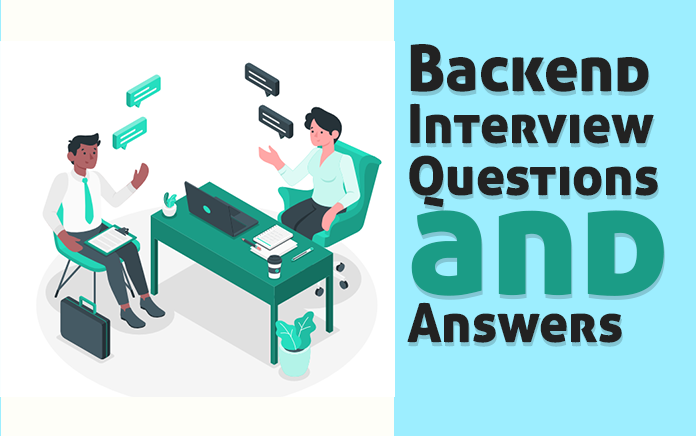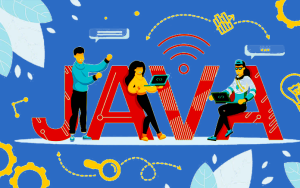Interviews with technical experts can be rewarding but also a challenge and can be extremely difficult when it comes to the backend. Selecting the best candidate for a position in the backend is crucial for the growth of any company It’s therefore crucial to be prepared to ask the correct questions. However in case you’re getting ready for an interview with a backend person you must ensure that you’re prepared to respond to the questions.
To assist you in preparing for your next interview with a backend to help you prepare for your next interview, we’ve created 37 questions and their answers. We’ll begin with general questions before moving on into more focused questions on frameworks as well as scalability and security to ensure you’re prepared in your interview.
How do you define a backend developer?
Developers of the backend have the responsibility for developing the server-side of web-based applications. They collaborate with front-end developers in order to ensure that data is correctly transferred between the server and client. To succeed in this job backend developers need an in-depth knowledge of server-side technology such as databases, caching, and databases.
The most popular Backend languages used include Java, Python along with PHP. But, other programming languages, including Ruby as well as Node.js, are utilized for backend development as well.
If you are interviewing an backend developer you must ensure that they have a solid understanding of server-side technology and are able to efficiently communicate with frontend developers. Also, you should inquire about their experiences with different databases and programming languages.
Here are 25 things you can inquire of a developer for backend at an interview:
Answers to common Backend interview questions and answers
- Define the reason for the backend?
- What’s a typical workflow to implement an innovative feature on the backend?
- Define the core of DRY as well as DIE principles?
- What is a Web Server?
- What’s the distinction between GET and POST request?
- What is an example of a situation where you could employ caching?
- What are the options to select the best plan to cache (e.g., LRU, FIFO)?
- What are the common issues in ORMs?
- When is the best time to use Asynchronous programming?
- What’s the distinction between callbacks and promises?
- How do you define closure?
- What’s the distinction between the two? What is the difference between a Class as well as an interface in Java?
- Is continuous Integration a term used to describe continuous integration?
- What is an Software Development Kit (SDK)?
- What are the advantages of rendering client-side in comparison to. Server-side rendering?
- How do you define high-order function? Why are they important?
- What is microservices?
- What would you do to develop an API?
- What is the difference between RESTful API and a SOAP API?
- What do you do to prevent errors in performing API calls?
- Is a database a good thing?
- What are your suggestions for optimizing the existing database?
- What’s the main difference between a relational database and a non-relational database?
- How do you access the data in an MongoDB database?
- What are the benefits of making use of the NoSQL database?
Let’s begin with some basic backend questions and their answers.
37 Questions for Backend Interviews and answers
General Questions
1. What is the function of the backend?
The backend, often referred to as the server-side software, is the part that runs a website or application. It is responsible for storing and organizing data, managing the requests of users, and then delivering information to the front-end.
2. What is the typical process for implementing an entirely new feature to the backend?
The workflows used to implement features in the backend may differ depending on the particular company as well as the stack of technology. A typical workflow will involve discussion of the feature with key stakeholders, creating and prototype the feature and writing the code and performing Quality Assurance (QA) testing. Most of the time the backend developer will collaborate with the front-end developer in order to ensure that the data is properly transferred between the client and server. It is also crucial to ensure that all new features are compatible with prior versions of the software.
3. Define the core in DRY AND DIE principles?
The DRY (Don’t Repetition yourself) concept is a principle of software development which states that developers shouldn’t duplicate their code. Duplicated code can cause problems with maintenance because changes have to be made in several locations. This is why the DIE (Duplication Is Evil) principle is identical in concept to DRY principle. But, it goes one step further, stating that even the smallest quantities of duplicates are insufficient and must be prevented.
4. What is a Web Server?
Web servers are computer that stores and distributes web pages. When you type in a URL to your browser, it connects with the web server, and requests the webpage. The server then transmits the page to the browser, and displays the page to your monitor. Apache as well as NGINX are two of the most used web servers that are used by backend programs.
Web servers also host other resources for example, videos or images.
5. What’s the distinction between GET and POST request?
A GET request is a method of retrieving information from a server unlike POST POST sends data to the server. In the GET request, the parameters are included into the URL. In the POST request, the parameters are transferred into the body of the request.
6. Which is one example how you could make use of caching?
Caching is frequently utilized to boost efficiency of applications. For example, frequently used data from databases could be stored in a cache to prevent unnecessary searches.
7. What is the best way to choose an appropriate method to store cache data (e.g., LRU, FIFO)?
The selection of a cache method is contingent on the particular requirements of the application. For instance LRU (Least recently used) is a great option for applications where the data will also be accessed again. The FIFO (First In First Out) is an excellent choice for applications that expires data after an arbitrary period of period of time.
8. What are the common problems that are common ORMs?
The most frequent problems with ORMs are performance issues as well as inaccurate mapping of data and difficulties in handling complicated queries.
9. When should you utilize Asynchronous programming?
Asynchronous programming is commonly utilized in order to enhance the efficiency or performance of an application. For instance, if an application has to perform a number of databases, it might be beneficial to implement the asynchronous programming method to not block an application’s main thread.
10. How can you tell the differences between callbacks and promises?
Promise is the name given to an object which is the outcome of an asynchronous process. Callbacks are functions that is called after an asynchronous operation has completed.
11. What is the definition of a closure?
Closures are program which accesses variables “outside” its own scope, within the scope of another function regardless of whether its parent function is been closed.
12. What’s the distinction between the two? What is the difference between a Class or Interface within Java?
An object is the blueprint of an object, while an interface can be described as a contract which specifies the procedures that a class has to implement.
13. Is continuous Integration a term used to describe continuous integration?
Continuous integration (CI) is an approach to software development that allows developers to regularly integrate their code changes into a common repository. CI aids in ensuring that the stability of the codebase and that there aren’t any conflicts between the different versions of the code.
14. What is an Software Development Kit (SDK)?
SDK is an array of tools designed to assist developers create software applications. It usually includes debugger, compiler, and other utility tools. The most popular SDKs that are used for backend development comprise that of the Java Development Kit (JDK) and the Python Software Development Kit (SDK).
15. What are the advantages of rendering on the client side in comparison to. Server-side rendering?
There are a few compromises in deciding between rendering on the client as well as server-side rendering.
client-side rendering is more complicated to setup due to the fact that the application has to be able to run within browser. That means the code needs to be translated from a high-level programming language (such like JavaScript) to lower-level languages (such like HTML). Additionally, rendering on the client side may be slower due to the fact that the application must download all necessary resources before beginning rendering.
However servers-side rendering is usually simpler to setup because developers can make use of any programming language capable of creating HTML. Additionally, rendering on the server is more efficient because the HTML is generated on the server before being transmitted directly to clients.
Be aware that these trade-offs typically are based on the complexity of the site and purpose.
16. Which are the high order functions? What are their benefits?
High-order functions use different functions for arguments. These functions can be used to in abstracting common patterns of code. For instance, a high-order function could be created that records the arguments it’s called using. This could be helpful to debug purposes.
17. What is microservices?
Microservices are microservice is a tiny independent element of an overall application. Each microservice comes with its own capabilities and is able to be used in its own way.
Microservices are often built into large complex and complex applications that are simple to manage and scale. One advantage of using microservices is the fact that they can be written in various programming languages and run on various servers.
Microservices are typically used for the authentication of users as well as payment processing and manipulation of images.
API Questions
18. What would you do to design an API?
When creating an API It is important to think about the requirements of developers using the API. The API must be simple to use and should be well-documented. It is also important to think about the API’s security , and ensure the only users who are authorized have access to access the information. Furthermore the API is expected handle a lot of requests, without overloading the server.
19. What is the main difference between RESTful API and a?
These APIs have been designed and developed to be simple to use and documented. They are based on a standard set of guidelines, which makes them easy to understand and utilize. However, SOAP APIs are designed to be more secure and handle a greater number of requests. However, they can be more complicated to understand and utilize.
20. How do you deal with errors in creating API calls?
While making API calls, it’s the industry norm to deal with the errors in a manner that’s compatible with the rest of the application. For example, if an API returns an error code 404 it could be appropriate to show a message to the user that the information cannot be located.




